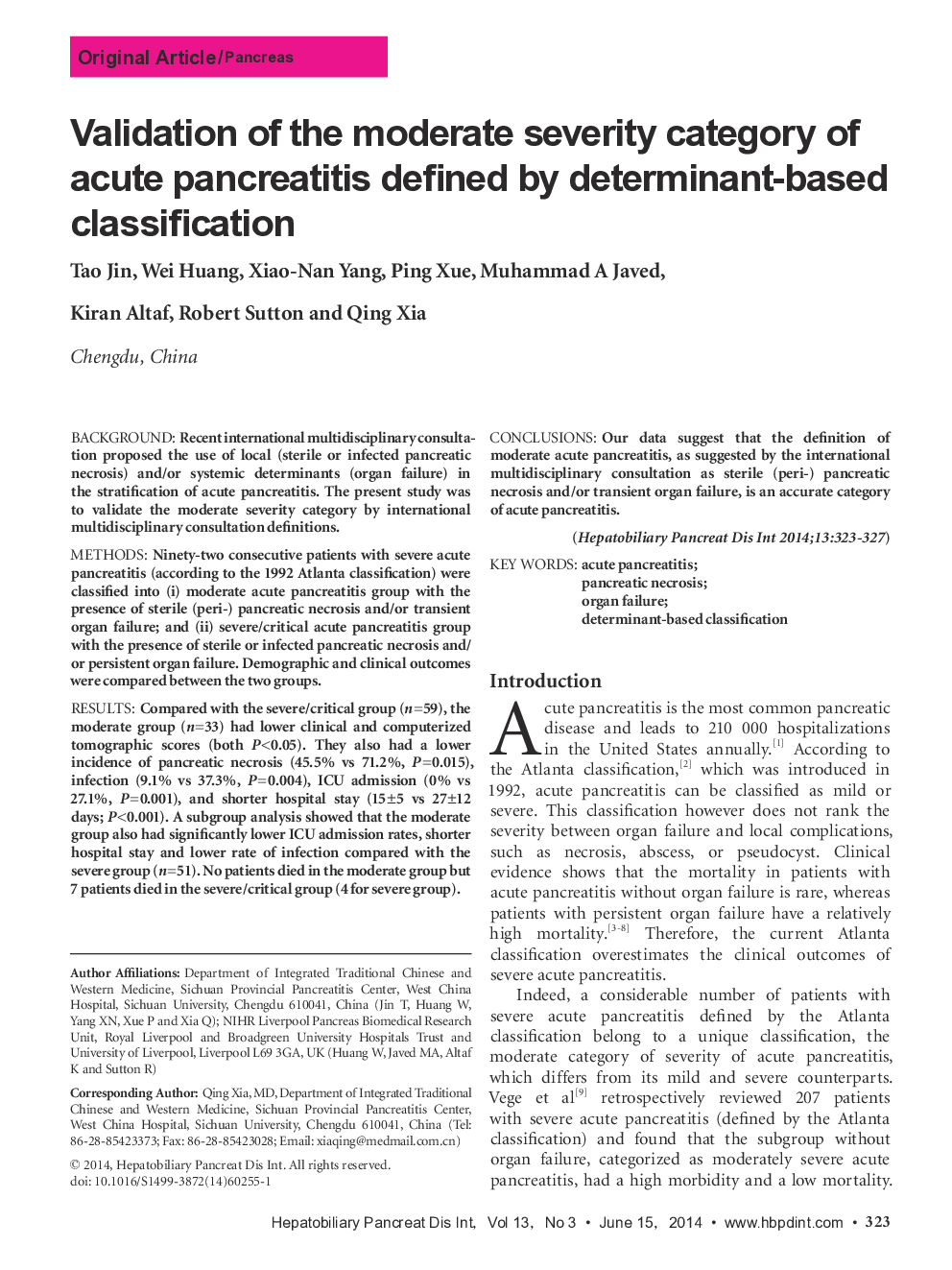| Article ID | Journal | Published Year | Pages | File Type |
|---|---|---|---|---|
| 3337429 | Hepatobiliary & Pancreatic Diseases International | 2014 | 5 Pages |
BackgroundRecent international multidisciplinary consultation proposed the use of local (sterile or infected pancreatic necrosis) and/or systemic determinants (organ failure) in the stratification of acute pancreatitis. The present study was to validate the moderate severity category by international multidisciplinary consultation definitions.MethodsNinety-two consecutive patients with severe acute pancreatitis (according to the 1992 Atlanta classification) were classified into (i) moderate acute pancreatitis group with the presence of sterile (peri-) pancreatic necrosis and/or transient organ failure; and (ii) severe/critical acute pancreatitis group with the presence of sterile or infected pancreatic necrosis and/or persistent organ failure. Demographic and clinical outcomes were compared between the two groups.ResultsCompared with the severe/critical group (n=59), the moderate group (n=33) had lower clinical and computerized tomographic scores (both P<0.05). They also had a lower incidence of pancreatic necrosis (45.5% vs 71.2%, P=0.015), infection (9.1% vs 37.3%, P=0.004), ICU admission (0% vs 27.1%, P=0.001), and shorter hospital stay (15±5 vs 27±12 days; P<0.001). A subgroup analysis showed that the moderate group also had significantly lower ICU admission rates, shorter hospital stay and lower rate of infection compared with the severe group (n=51). No patients died in the moderate group but 7 patients died in the severe/critical group (4 for severe group).ConclusionsOur data suggest that the definition of moderate acute pancreatitis, as suggested by the international multidisciplinary consultation as sterile (peri-) pancreatic necrosis and/or transient organ failure, is an accurate category of acute pancreatitis.
